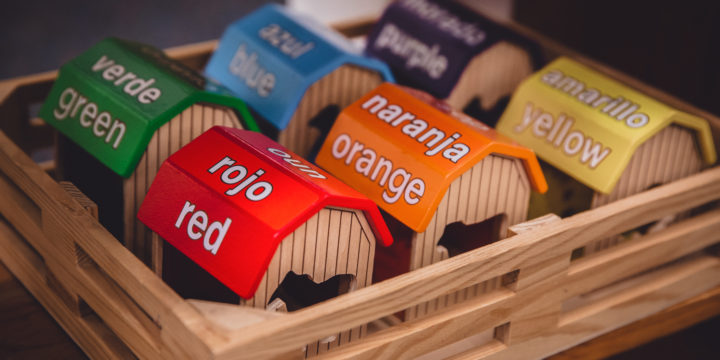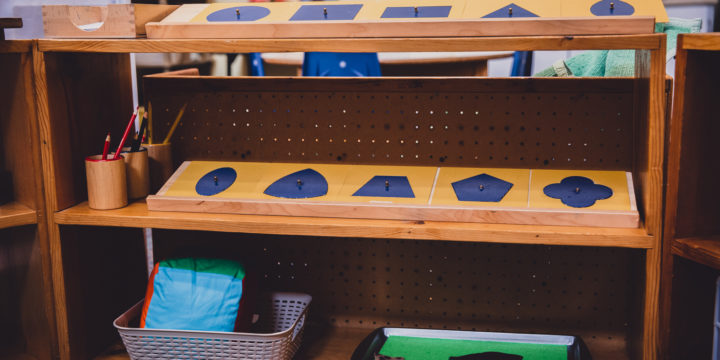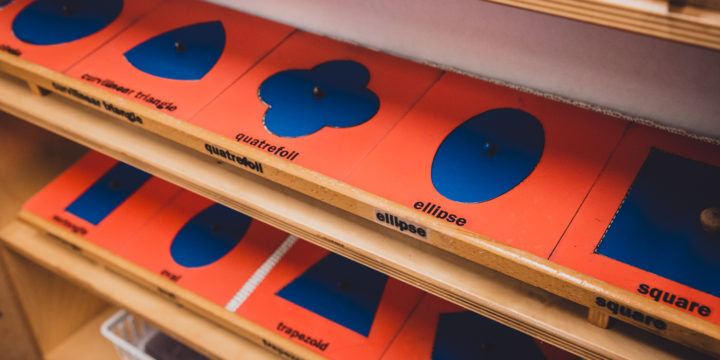




The Montessori Method
The Montessori Method was founded by Dr. Maria Montessori (1870-1952), an Italian physician who worked with deprived inner-city children in the early 1900s and had a particular genius for observing children as they really are rather than as adults wish them to be.
Dr. Montessori believed that no human being is educated by another person. The children come to feel that learning is a product of their own actions and experiences, not just the result of instruction received from a teacher. A truly educated individual continues learning long after his years in the classroom because he is motivated by a natural curiosity and love for knowledge. Dr. Montessori felt that the goal of early childhood education should not be to fill the child with facts from a pre-selected course of studies, but rather to cultivate a desire to learn. She developed an educational philosophy that focuses on the education of the whole child, with an emphasis on hands-on materials and a carefully prepared environment.
Why Montessori?
A Child-Led Approach to Learning
Montessori education is student-led and self-paced allowing children to take the time they need to fully understand each concept and meet their individualized learning goals.
Teacher Serves as Guide and Facilitator
Seen less as an instructor and more as a guide, Montessori teachers facilitate each child’s individual growth, exploration, and participation.
A Simple Yet Carefully Prepared Environment
Montessori classrooms might look a little different than traditional classrooms with wood materials, floor mats, child-accessible work shelves, and real-life materials. By not using screens, flashing lights, or distracting decor, Montessori classrooms provide a peaceful environment for children to explore and learn. Montessori classrooms are simple in nature but carefully curated.
Promotes Independence & Confidence
Multi-aged classrooms create natural opportunities for independence, collaboration, and accountability while developing important social skills.
Fosters a Love for Learning
Cultivates a desire to learn rather than the goal of filling a child with facts from a pre-selected course of studies.
Focuses on Education of the Whole Child
Unique hands-on materials provide tangible learning experiences in 5 core areas: math, language, cultural, sensorial, and practical life.
Characteristics of a Montessori Education
Multi-age groupings (2-3 year age span) within the classrooms.
- All classroom furnishings are sized for the child.
- Independence is encouraged.
- Children select activities which meet their individual interests and readiness.
- Emphasis is on the process of the activities, not the product created- so a natural love of learning is allowed to blossom.
- When learning new concepts, children begin with the concrete and then move on to the abstract.
- Children learn through practicing skills learned, not just by listening and forced memorization.
- Children will demonstrate mastery of an academic skill before they progress to the next level of difficulty.
- Curriculum promotes hands-on exploration including practical living skills, sensorial, math, language, history, sciences, art, music and perceptual motor development.
- Lessons are presented one-on-one or in small groups.
- Children work and learn at their own pace in a noncompetitive environment; child’s progress is tracked with portfolio assessment.
- Classroom environment is maintained by the children.
- Peer teaching is encouraged, developing the child’s leadership skills.
- Montessori graduates:
- are usually very adaptable
- have learned to work independently and in groups
- have been encouraged to make decisions from an early age and are problem solvers who can make choices and manage their time well
- have been encouraged to exchange ideas and to discuss their work freely with others
- have good communication skills which help ease the transition into new setting